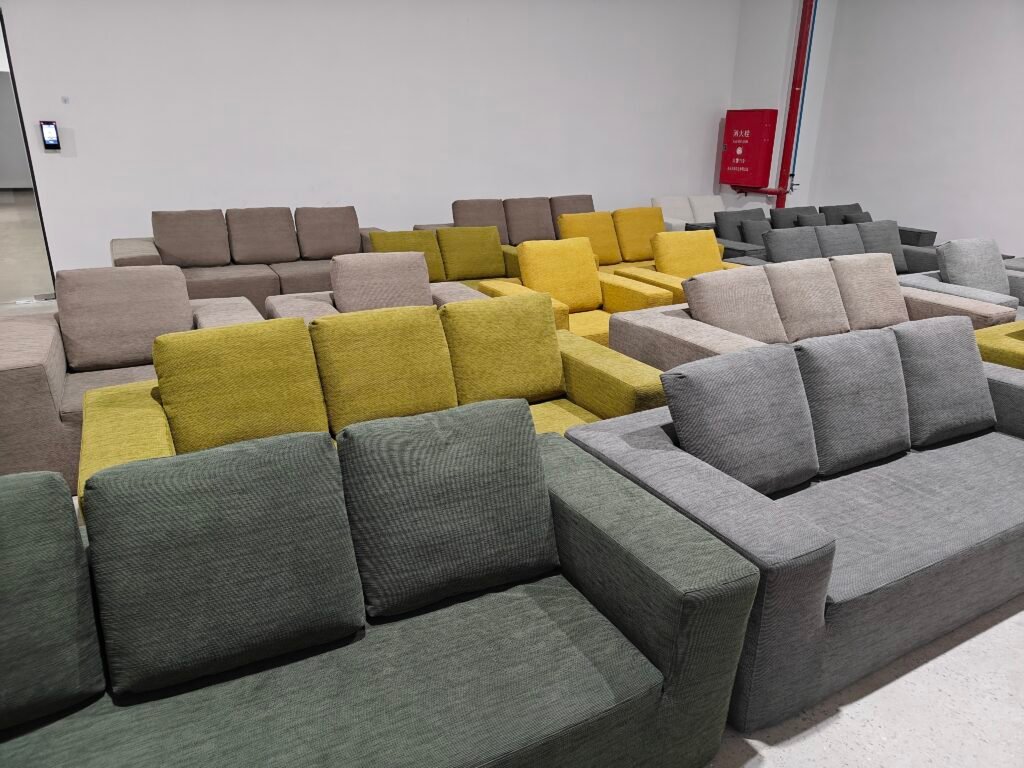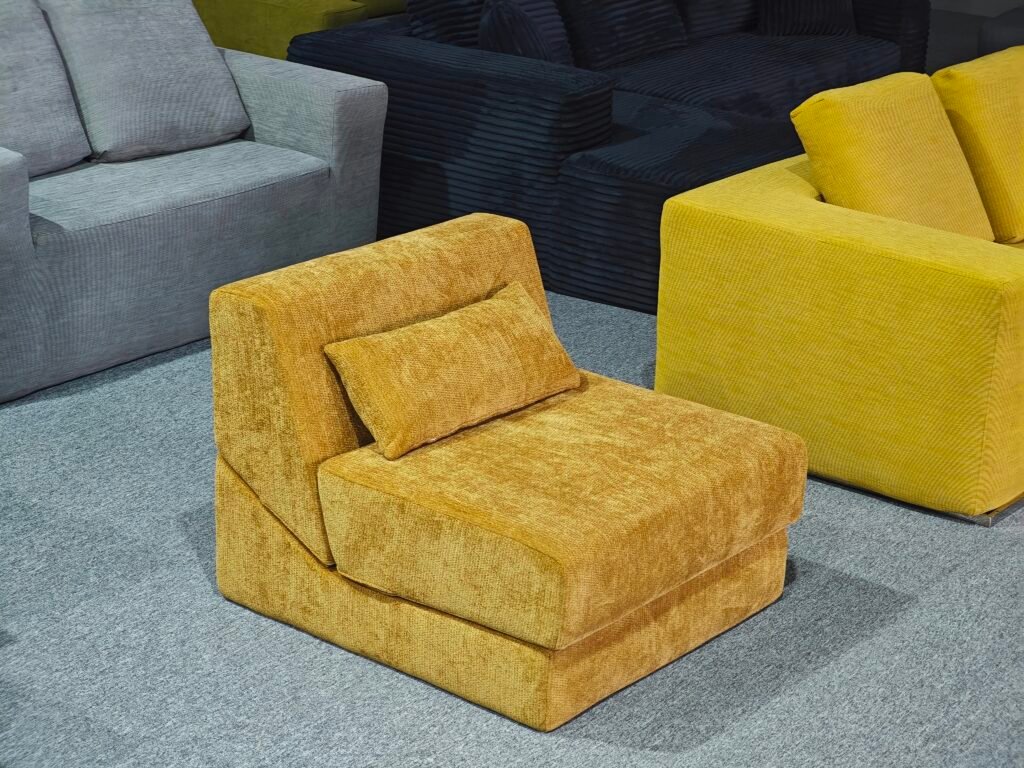In today’s global furniture market, innovation plays a pivotal role in capturing international demand and optimizing operational efficiency. Among the most transformative advances is compressed sofa technology, enabling sofas to be compressed, vacuum-packed, and shipped with drastically reduced volume and cost. For aspiring entrepreneurs or furniture manufacturers, leveraging this technology opens unprecedented opportunities to start or expand an export business.
At modular-sofas.com, a leading compressed sofa factory, we have witnessed firsthand how compression technology catalyzes growth—offering scalable production, reduced logistics costs, and new markets worldwide.
This comprehensive guide will walk you through every essential step to start a sofa export business using compress technology: from understanding technical aspects and factory operations to legal compliance, logistics, marketing, and cost strategies.


- Understanding Compressed Sofa Technology
- Why Compressed Sofas Revolutionize Export Business
- Market Research and Product Selection
- Setting up a Compressed Sofa Factory
- Legal Compliance and Export Documentation
- Packaging & Shipping Strategies Using Compress Technology
- Building Your Supplier and Logistics Network
- Marketing and Sales Channels for Export Sofas
- Pricing Strategies and Profitability Analysis
- Customer Service and After-Sales Support in Export
- Challenges and How to Overcome Them
- Summary Comparison Table: Compress Technology vs Traditional Sofa Export
- Final Thoughts and Next Steps
1. Understanding Compressed Sofa Technology
Compressed sofas are crafted using high resilience foam, modular design, and vacuum compression. They are vacuum-packed to remove air and then rolled or folded tightly into compact bundles for shipping. Upon unpacking, the foam expands quickly back to its original shape, requiring minimal or no assembly.
Key points about compress technology include:
- Advanced Foam Materials: Provide comfort, durability, and rapid shape recovery.
- Vacuum Sealing: Utilizes machines to remove air and produce dense compact packaging.
- Modular Design: Sofas are designed in pieces or flexible units tailored for compression.
- Space and Weight Efficiency: Packaging volume can reduce by 70-80%, drastically lowering freight cost and environmental impact.
This technology allows export businesses to deliver quality sofas at competitive prices, minimize shipping costs, and enter new global markets.
2. Why Compressed Sofas Revolutionize Export Business
Traditional sofa export is burdened by bulky, heavy shipments that increase freight and warehousing expenses. Compressed sofas overcome these barriers by enabling:
- Significant Freight Cost Reduction: Smaller volume means more units per container and fewer shipments.
- Simpler Handling and Delivery: Lighter, compact packages enable easier last-mile delivery.
- Lower Storage Costs: Warehousing space use is minimized.
- Faster Market Entry: Reduced shipping delays and damage risks.
- Increased Customer Satisfaction: Easy unboxing and rapid expansion improve user experience.
Incorporating compress technology can position your sofa export business as a market innovator with strong competitive advantages.
3. Market Research and Product Selection
Before launching, conduct comprehensive market research to identify target regions, consumer preferences, and competitors.
Focus areas:
- Target Markets: Identify countries with growing demand for modular and space-efficient furniture. For instance, urban areas in North America, Europe, and parts of Asia show high appetite for compact, modern sofas.
- Consumer Preferences: Analyze colour, design, fabric, and size trends.
- Competitor Analysis: Survey existing compressed sofa exporters and their pricing.
- Product Range: Decide if you will offer modular sofas, recliners, or specialty compressed products.
Targeting niche markets with tailored compressed sofa collections can help differentiate your export business.


4. Setting up a Compressed Sofa Factory
Starting a factory specializing in compressed sofas involves integrating production and packaging processes that support compress technology:
- Material Sourcing: Acquire high-quality foam, durable upholstery fabric, and compression-grade packaging materials.
- Machinery Investment: Vacuum compression machines, automated folding/rolling systems, and quality control equipment.
- Design & Engineering: Employ designers skilled in modular, compression-friendly styles.
- Skilled Workforce: Train teams in assembly, compression packaging, and quality assurance.
- Quality Control: Ensure durability, comfort, and packaging integrity to maintain international standards.
For established furniture manufacturers, retrofitting an existing factory with compression machinery is a viable path. New entrants can build compact modular factories focused on compressed sofa production, minimizing overhead.
5. Legal Compliance and Export Documentation
International export requires meticulous compliance with shipping laws and trade regulations:
- Export License: Obtain the necessary licenses from your government authority.
- Documentation: Prepare commercial invoices, packing lists, certificates of origin, and bill of lading.
- Customs Compliance: Understand HS codes for compressed sofas and local import duties for target markets.
- Product Standards: Verify adherence to fire safety, material safety, and environmental certifications required in destination countries.
- Trade Agreements: Leverage free trade agreements to minimize tariffs.
Partner with experienced freight forwarders and trade consultants to navigate regulatory complexities efficiently.
6. Packaging & Shipping Strategies Using Compress Technology
Packaging is central to the success of a compressed sofa export business.
- Vacuum Packaging: Use advanced vacuum machines to compress and seal sofas into compact plastic rolls or boxes.
- Durable Packaging Materials: Employ tear-resistant films and moisture barriers to protect during transit.
- Optimized Shape and Dimensions: Modular designs facilitate rectangular packaging that maximizes container space.
- Shipping Modes: Use sea freight for cost efficiency, air freight for urgent shipments.
- Labeling: Ensure clear marking for handling instructions and expand-on-opening notices.
These strategies ensure product integrity and space-saving benefits continue through transit and delivery.
7. Building Your Supplier and Logistics Network
Efficient sourcing and logistics are critical to export success:
- Material Suppliers: Secure reliable sources for foam, fabrics, and packaging materials with consistent quality.
- Supply Chain Partners: Collaborate with shipping agents, customs brokers, and warehousing providers experienced with compressed furniture.
- Distribution Network: Establish international distributors or local warehouses in key markets for quicker delivery.
- Last-Mile Delivery: Partner with logistics companies that can handle light, compact compressed sofa packages flexibly.
A strong logistics ecosystem reduces lead times and operational risk.
8. Marketing and Sales Channels for Export Sofas
Marketing strategies should emphasize the advantages of compressed sofas:
- Digital Marketing: Use SEO, social media, and paid ads to target international buyers searching for space-saving sofas.
- E-commerce Platforms: Sell on Amazon, Wayfair, or niche furniture online stores.
- Trade Shows: Participate in furniture expos globally to connect with retailers and bulk buyers.
- Direct Export Sales: Build relationships with furniture stores and wholesalers overseas.
- Branding: Highlight ease of delivery, sustainability, and space efficiency.
Strong marketing builds brand recognition and accelerates sales growth.
9. Pricing Strategies and Profitability Analysis
Effective pricing balances competitiveness against costs:
| Cost Element | Description | Impact on Pricing |
|---|---|---|
| Production Cost | Raw materials, labor, compression packaging | Lower with efficient compress technology |
| Packaging & Logistics | Vacuum machines, materials, freight | Significantly reduced due to volume compression |
| Customs & Duties | Import taxes and tariffs in target markets | Variable per country, should be factored in |
| Marketing & Sales | Advertising, distribution, trade show attendance | Ongoing investment |
| Profit Margin | Desired net margin after all expenses | Adjusted to remain competitive |
Because compress technology lowers freight and storage costs substantially, exporters can price competitively while maintaining healthy margins.
10. Customer Service and After-Sales Support in Export
To ensure long-term success:
- Provide clear unpacking and expansion instructions.
- Offer easy-to-access online support and warranty.
- Maintain fast response times to queries or complaints.
- Collect customer feedback to refine designs or packaging.
Building trust and repeat sales relies heavily on positive post-sale experiences.


11. Challenges and How to Overcome Them
- Quality Control: Ensure compression does not damage foam or upholstery.
- Shipping Damage Risks: Invest in durable packaging and stable container loading methods.
- Market Entry Barriers: Build business relationships and verify compliance meticulously.
- Capital Investment: Budget carefully for machinery and operational expenses.
Strategic planning and strong supplier partnerships mitigate these challenges.
12. Summary Comparison Table: Compress Technology vs Traditional Sofa Export
| Feature | Compressed Sofa Export | Traditional Sofa Export |
|---|---|---|
| Packaging Volume Reduction | Up to 80% reduction | No volume reduction |
| Freight Cost | Significantly lower per unit volume | High due to bulky crates |
| Shipping Flexibility | High, easier last-mile delivery | Low, heavy and bulky |
| Storage Costs | Lower due to compact packaging | High warehouse space required |
| Production & Packaging Time | Faster with modular design and compression | Longer for fully assembled units |
| Damage Risk During Transit | Reduced due to vacuum sealed packaging | Higher due to fixed, bulky frames |
| Customer Convenience | Easy unpacking and quick sofa expansion | Heavy, harder to move |
| Environmental Impact | Lower carbon footprint due to efficient logistics | Higher due to volume and weight |
| Initial Investment Cost | Requires vacuum machinery and training | May require less machinery but higher logistics |
| Market Accessibility | Expanded due to lower shipping costs | Limited by freight expense |
13. Final Thoughts and Next Steps
Starting a sofa export business using compress technology combines innovation with strategic planning. It unlocks new markets, reduces logistics costs, and enhances customer satisfaction. As a compressed sofa factory and modular sofa specialist, modular-sofas.com exemplifies how integrating cutting-edge packaging and product design can reshape international furniture trade.
Next Steps:
- Conduct detailed market research tailored to your target export zones.
- Build or retrofit factory capabilities with compression machinery and modular design teams.
- Develop robust legal compliance and logistics frameworks.
- Craft unique marketing messages emphasizing sustainability and practicality.
- Scale progressively based on customer feedback and market demand.
By following these steps meticulously, entrepreneurs and manufacturers can successfully launch and grow a sofa export business driven by compress technology.